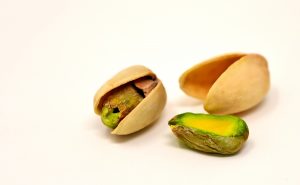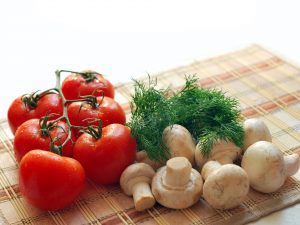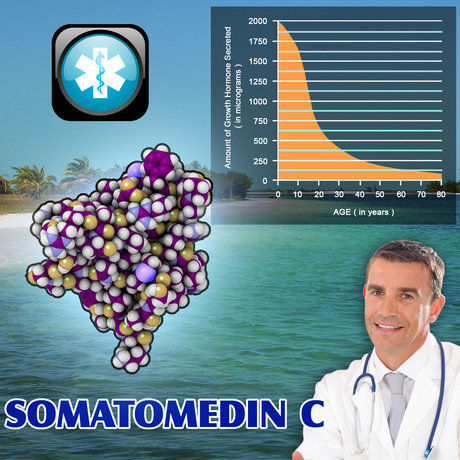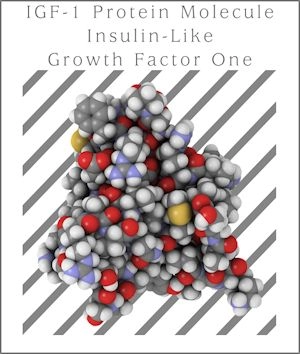 In modern times, many Americans have issues with getting to sleep and maintaining a deep sleep throughout the night. There are several reasons behind this worsening trend.
In modern times, many Americans have issues with getting to sleep and maintaining a deep sleep throughout the night. There are several reasons behind this worsening trend.
These include too much light just before bedtime, blue light in the bedroom from gadgets, increased stress levels, hormone imbalance, too much caffeine, etc. Some people combat this by adding melatonin supplements to their bedtime routine, in addition to removing some of the stressors in their life and improving their lifestyles.
Get Your Melatonin from Natural Foods
Melatonin is an important hormone that is naturally produced by our bodies. It tells our body that it is time to sleep.
However, things such as light and increased stress (increased cortisol levels) suppress the body’s natural production of melatonin. If you do not want to take synthetic melatonin supplements or pills, consider getting your melatonin from natural food items. The best source is pistachios!
 The great thing about getting melatonin from food items is that they promote better sleep without causing grogginess in the morning (sleeping pills are horrible with this side effect).
The great thing about getting melatonin from food items is that they promote better sleep without causing grogginess in the morning (sleeping pills are horrible with this side effect).
Other food items include grains and mushrooms.
What Does Melatonin Do in the Body?
Usually, melatonin is produced in response to darkness. This is why being in bright lights around bedtime, and especially blue light from the television or phone screen, is so detrimental to your sleep patterns. Without darkness, your body won’t produce the necessary melatonin. Melatonin typically peaks around 2 a.m.
Foods that contain melatonin can significantly increase the amount of the sleep-promoting hormone in your body. Therefore, eating something like pistachios before bedtime can help your body realize, hey, it’s time for bed soon!
In fact, just one ounce of pistachios has about 6 mg of melatonin. This is similar to what is found in the average melatonin supplement.
 In addition to getting you to sleep promptly, melatonin also maintains healthy eyes, calms stomach ulcers, and heartburn, and lessens tinnitus symptoms. It’s not just about healthy sleep!
In addition to getting you to sleep promptly, melatonin also maintains healthy eyes, calms stomach ulcers, and heartburn, and lessens tinnitus symptoms. It’s not just about healthy sleep!
Eat Pistachios Before Bedtime to Get Better Sleep
If you’d instead not consume pills before bedtime or lower the number of vitamins and pills you take throughout the day, consider getting your melatonin naturally from healthy foods. If you eat 3.5 ounces, or 100 grams, of shelled pistachios, you will get about 23 mg of melatonin.
To visualize this, 1 cup holds about 4.5 ounces, or 128 grams, of shelled pistachios. Interestingly, a melatonin supplement usually contains just 0.2 to 10 mg per dose!
 It is considered safe for adults to consume 0.2 to 5 mg of melatonin an hour before bedtime when in synthetic supplement form.
It is considered safe for adults to consume 0.2 to 5 mg of melatonin an hour before bedtime when in synthetic supplement form.
Taking more than 30 mg of supplemented melatonin could be harmful, but more research is needed.
You do not need to worry if you eat 3.5 ounces of pistachios and consume 23 mg of melatonin from pistachios.
Your body can handle the amount of melatonin being released during digestion because it is released much slower than when taken as a concentrated pill. Your body knows what to do with real food – a pill is something less natural and less compatible with the body.
Food Sources of Melatonin
The food sources with the most melatonin include:
- Pistachios: 230,000 nanograms (ng) of melatonin per gram (g) of pistachios
- Mushrooms: 4,300-6,400 ng per g
- Oats: 91 ng per g
- Cherries: 10-20 ng per g
- Tomatoes: 1-67 ng per g
- Cow’s Milk: 0.014 ng per milliliter (Cow’s milk also contains tryptophan which your body can convert to melatonin.)
Contact Us For A Fast And Professional Response

- The Other Aspect of Dieting – Removing Chronic Stressors From Your Life [Last Updated On: February 9th, 2025] [Originally Added On: September 9th, 2020]
- The Flaws of Six Popular Diets [Last Updated On: June 6th, 2025] [Originally Added On: September 20th, 2020]
- Purchase Sermorelin Acetate Injections Online [Last Updated On: February 8th, 2025] [Originally Added On: September 23rd, 2020]
- Eating Right On a Low-Glycemic Diet [Last Updated On: April 20th, 2025] [Originally Added On: October 1st, 2020]
- The Benefits of Intermittent Fasting [Last Updated On: May 16th, 2025] [Originally Added On: October 2nd, 2020]
- Eat Healthier with White Flour Alternatives [Last Updated On: August 26th, 2025] [Originally Added On: October 3rd, 2020]
- Ten Common Contributors to Obesity that Make it Hard to Lose Weight [Last Updated On: March 5th, 2025] [Originally Added On: October 4th, 2020]
- How Can Sermorelin Enhance Your Life? Losing Weight and Battling Premature Aging With Sermorelin [Last Updated On: April 1st, 2025] [Originally Added On: October 5th, 2020]
- Benefits and Risks of HGH Therapy: 2018 Update [Last Updated On: April 15th, 2025] [Originally Added On: October 6th, 2020]
- Have You Heard About the 21st Century Breakthroughs in Hormone Replacement Therapy? [Last Updated On: September 16th, 2025] [Originally Added On: October 7th, 2020]
- The Importance of Omega-3 Fatty Acids [Last Updated On: June 4th, 2025] [Originally Added On: October 8th, 2020]
- The Relationship Among Testosterone, Obesity, and Alzheimer's Disease [Last Updated On: August 25th, 2025] [Originally Added On: October 9th, 2020]
- Major Alzheimer's Risk To Continued Sleep Deprivation [Last Updated On: April 29th, 2025] [Originally Added On: October 10th, 2020]
- Should You Choose the Ketogenic Diet? [Last Updated On: May 7th, 2025] [Originally Added On: October 13th, 2020]
- HGH and Insulin: The Primary Agents of Energy Bio-Availability [Last Updated On: March 24th, 2025] [Originally Added On: October 14th, 2020]
- How Can Women Maximize HGH Production? [Last Updated On: April 5th, 2025] [Originally Added On: October 18th, 2020]
- Micro Nutrients Versus Macro Nutrients [Last Updated On: October 21st, 2025] [Originally Added On: November 4th, 2020]
- Some of the most effective Weight Loss Injection and Diet Injection Programs [Last Updated On: June 10th, 2025] [Originally Added On: November 6th, 2020]
- Information About Chelation Therapy [Last Updated On: April 9th, 2025] [Originally Added On: November 9th, 2020]
- Seven Ways to Help You Burn Calories Faster and More Effectively [Last Updated On: March 28th, 2025] [Originally Added On: January 21st, 2021]
- Don’t Eat These Foods When Taking Sermorelin Acetate for HGH Deficiency [Last Updated On: February 14th, 2025] [Originally Added On: February 3rd, 2021]
- Understanding Aerobic vs. Anaerobic Exercise [Last Updated On: May 13th, 2025] [Originally Added On: March 4th, 2021]
- Physician’s Fact Sheet: Vitamin E [Last Updated On: October 18th, 2025] [Originally Added On: March 8th, 2021]
- Naturally Losing Weight with Lifestyle Changes Keeps the Weight Off for Good [Last Updated On: May 4th, 2025] [Originally Added On: March 27th, 2021]
- The Health Benefits of the Amazing Strawberry [Last Updated On: February 9th, 2025] [Originally Added On: May 8th, 2021]
- Three Kinds of Body Fat and How They Impact Your Health [Last Updated On: August 12th, 2025] [Originally Added On: April 12th, 2022]
- Pistachios: You’re Not Nuts [Last Updated On: October 7th, 2025] [Originally Added On: August 3rd, 2022]
- 7 Surprising Things That Mess With Your Hormones [Last Updated On: February 26th, 2025] [Originally Added On: September 5th, 2022]
- Adding Cranberries to Your Diet can Really Add Zest – and Health – to Your Life. [Last Updated On: September 27th, 2025] [Originally Added On: January 10th, 2023]
- Raspberries – Delicious Portal to Shining Good Health [Last Updated On: October 1st, 2025] [Originally Added On: January 18th, 2023]
- Study Shows Cialis and Viagra Users have 25% Lower Early Death Rates [Last Updated On: March 14th, 2025] [Originally Added On: February 19th, 2023]
- Introduction: Understanding the Multifaceted Nature of Obesity [Last Updated On: March 2nd, 2025] [Originally Added On: March 2nd, 2025]
















